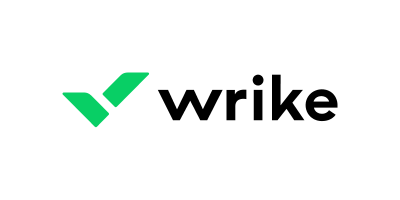-
monday work management: Best for teams of all technical levels
-
Smartsheet: Best for spreadsheet lovers
-
ClickUp: Best for teams on a tight budget
-
Teamwork: Best for time tracking and budgeting
-
Wrike: Best for portfolio management
-
Asana: Best for extensibility
-
Confluence: Best for project document management
-
Zoho Projects: Best for multiple project visualizations
-
Trello: Best for basic users
-
Jira: Best for development teams
As organizations worldwide continue to adapt to an increasingly competitive landscape and a rapidly evolving business environment, the demand for effective project management solutions has never been greater. Companies of all sizes are recognizing the need to streamline workflows, enhance collaboration and boost overall productivity. Implementing the right project management software can help businesses stay ahead of the curve by ensuring projects are completed on time, within budget and with optimal resource allocation.
Jump to:
- Top project management software comparison
- Key features of project management software
- Benefits of project management software
- Considerations for project management tools
- How do I choose the best project management software for my business?
Featured partners
Top project management software comparison
Alongside pricing, here are some of the most important features that set apart the best project management software on the market. The table below illustrates which of the top 10 project management tools include these key features.
| Software | Pricing | Native time tracking | Multiple view types | Customizable templates | Task management | Free plan |
|---|---|---|---|---|---|---|
| monday work management | $8 per user per month | Yes | Yes | Yes | Yes | Yes |
| Smartsheet | $7 per user per month | No | Yes | Yes | Yes | Yes |
| ClickUp | $5 per user per month | No | Yes | Yes | Yes | Yes |
| Teamwork | $5.99 per user per month | Yes | Yes | Yes | Yes | Yes |
| Wrike | $9.80 per user per month | Yes | Yes | Yes | Yes | Yes |
| Asana | $10.99 per user per month | No | Yes | Yes | Yes | Yes |
| Trello | 5 per user per month | No | Yes | Yes | Yes | Yes |
| Zoho Projects | $4 per user per month | No | Yes | Yes | Yes | Yes |
| Confluence | $5.75 per user per month | No | Yes | Yes | Yes | Yes |
| Jira | $7.75 per user per month | No | Yes | Yes | Yes | Yes |
monday work management: Best for teams of all technical levels
-
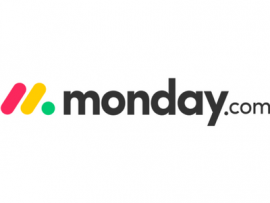
Image: monday.com
monday work management is a reputable project management brand with a flexible platform for teams of all flavors. While initially intimidating, the monday work management interface is packed with features and offers extensive configuration management capabilities. While other solutions lean into a few views of project data, monday work management gives users the most flexibility in adding and configuring valuable visualizations.
Though I ran into hiccups using monday work management, the project management software excels in configurability, giving teams the expected control to optimize workflows.
Pricing
- Individual: $0 for up to two seats.
- Basic: $8 per seat per month billed annually, or $10 per seat per month billed monthly. A free trial is available.
- Standard: $10 per seat per month billed annually, or $12 per seat per month billed monthly. A free trial is available.
- Pro: $16 per seat per month billed annually, or $20 per seat per month billed monthly. A free trial is available.
- Enterprise: Quotes are available upon request.
Features
- Visualize project data through multiple tables (Figure A), kanban and dashboard views.
- Personalize colorful interfaces that bring project data to life.
- Customize and share surveys for data collection via the WorkForms tool.
- Access integrations for developers, marketing, CRM and project management.
- Utilize pre-built automations and a long list of options for creating automation rules.
Figure A

Top integrations
- Jira
- GitHub
- Slack
- Dropbox
Pros
- Clean user interface not bogged down by the platform’s extensive features.
- Robust configurations for setting the workspace and tools to team specifications.
- Designed for a multitude of use cases across industries and functions.
Cons
- An evident learning curve for new users and implementing advanced features.
- Import engine failed to pull most existing data into the platform.
- Manually inputting data to reconcile imports was the biggest pain point.
Why we chose monday work management
We choose monday work management for its outstanding versatility as project management software. It’s a powerful tool for a variety of project management use cases and offers robust features for team collaboration tools, automation features and customization.
For more information, read the full monday work management review.
Smartsheet: Best for spreadsheet lovers
-
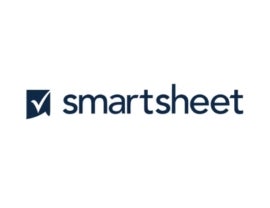
Image: Smartsheet
Launched in 2005, Smartsheet’s project and work management platform is one of the safest bets in the project management software market. From onboarding to using the platform, I was impressed by the interface’s user-friendliness and the features’ extensibility. Smartsheet offers an upgrade from traditional tools by adding accessible user experience features, needed integrations, robust configurability and no-code capabilities to a spreadsheet interface.
Smartsheet pricing is among the highest on the market, and there is no unlimited free plan. Still, I believe the platform’s benefits more than justify consideration for small teams up to enterprise organizations.
Pricing
- Pro: $7 per user per month billed annually, or $9 per user per month billed monthly. A free trial is available.
- Business: $25 per user per month billed annually, or $32 per user per month billed monthly. A free trial is available.
- Enterprise: Quotes are available upon request.
Features
- Ability to create, import and manage project data on a central cloud-based platform.
- Ability to visualize project data through the Grid (Figure B), Gantt, Card and Calendar views.
- Flexible options for setting and adjusting project field data.
- Access to WorkApps, the platform’s no-code tool for building web and mobile apps.
- Activity log for tracking change management with filters to identify actions.
Figure B

Top integrations
- Microsoft Teams
- Slack
- Salesforce
- Zapier
Pros
- Friendly user interface for moving from legacy spreadsheet tools.
- Extensive documentation and access to onboarding assistance.
- Prebuilt project and automation templates to get to work fast.
Cons
- Several tools are add-ons, requiring an additional purchase.
- Security features are limited to the Enterprise subscription.
- Premium support is only available for higher-tier plans.
Why we chose Smartsheet
While Smartsheet is ideally suited for users who prefer a spreadsheet-style interface, it offers several advanced project management features that help streamline processes and save time. The clean and simple layout makes for an easy learning curve, and for users who don’t want to start from scratch, they can use the customizable templates from the library.
SEE: Read our Smartsheet review, or check out how Smartsheet compares to monday work management and Asana.
ClickUp: Best for teams on a tight budget
-
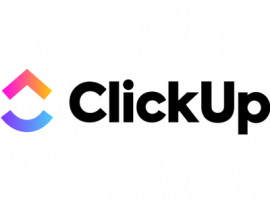
Image: ClickUp
The fastest mover in the project management software space is ClickUp. Only five years after its founding, the San Diego-based startup has grown into one of the top project management solution providers. ClickUp far exceeded my expectations with a stack of project views and tools to enable productivity and collaboration for a wide variety of functional teams.
Add in ClickUp’s handful of affordable subscriptions for different team sizes, and it’s difficult not to consider this budding project management software.
Pricing
- Free Forever: $0; best for personal use.
- Unlimited: $5 per user per month billed annually, or $9 per user per month billed monthly.
- Business: $12 per user per month billed annually, or $19 per user per month billed monthly.
- Business Plus: $19 per user per month billed annually, or $29 per user per month billed monthly.
- Enterprise: Quotes are available upon request.
Features
- Visualize project data through the List (Figure C), Board, Gantt, Calendar, Workload and Map views.
- Create and modify tasks or bulk edit tasks from a list of potential operations.
- Manage granular configurations of platform features and security.
- Track and visualize project data through the Dashboards view.
- Import data from monday, Asana, Trello, Jira, Wrike, Basecamp and Todoist.
Figure C

Top integrations
- Zoom
- Github
- HubSpot
- Loom
Pros
- Widest and most affordable range of plans to meet different-sized team needs.
- Robust configurability for customizing and managing platform workflows.
- Access to over 1,000 integrations for developers, business suites, storage and more.
Cons
- Slight variance between the imported file and platform results.
- Some platform actions are less intuitive and require additional troubleshooting.
- Occasional lagging between moving pages and lingering platform notices.
Why we chose ClickUp
We picked ClickUp as one of the best project management software for its affordable pricing plans, comprehensive features and customizable workflows. In addition, the friendly user interface makes it a top choice for users of all technical levels.
SEE: Read our ClickUp review, or see how ClickUp compares to Notion, Trello and Asana.
Teamwork: Best for time tracking and budgeting
-
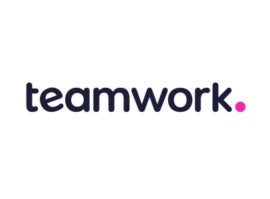
Image: Teamwork
As the name implies, Teamwork is project management software that enables team and workload management. The Ireland-based platform offers a similar range to other top project management solutions but excels in time tracking, budgeting and stakeholder management. Whether it’s personnel or a third-party contractor, Teamwork is fit for optimizing the globally distributed workflows of tomorrow.
While a few actions during my experience with Teamwork didn’t seem as intuitive as other platforms, the platform and its potential to organize team projects are impressive.
Pricing
- Free Forever: $0 per month for up to five users.
- Starter: $5.99 per user per month billed annually, or $8.99 per user per month billed monthly. A free trial is available.
- Deliver: $9.99 per user per month billed annually, or $13.99 per user per month billed monthly. A free trial is available.
- Grow: $19.99 per user per month billed annually, or $25.99 per user per month billed monthly. A free trial is available.
- Scale: Quotes are available upon request.
Features
- Visualize project data through the Gantt, kanban, dashboard (Figure H), calendar and table views.
- Build and generate reports of project data to share via CSV, Excel or PDF.
- Create project templates, dashboards, risks and project-level tags for re-use.
- Integrate with Zapier, Google Drive, Box, Slack, Microsoft, HubSpot and more.
- Access built-in Teamwork apps for collaborative spaces, IT help desks, customer relationship management and web chats.
Figure D

Top Integrations
- Slack
- Google Drive
- Microsoft Teams
- Usersnap
Pros
- Strongest time tracking and workload management capabilities of the products I reviewed.
- Deep range of features emulating the best in the project management software market.
- Free 30-day trial, an unlimited free plan and affordable annual subscriptions.
Cons
- Basic Agile support and burndown reports are only available with higher plans.
- Configure notification settings, or get ready for a full inbox.
- Modifications sometimes took several seconds to load.
Why we chose Teamwork
Teamwork offers excellent tools for time tracking and budgeting and has the capacity to handle projects of all sizes. The extensive range of features, including multiple project views, team collaboration tools and integrated file sharing, earns Teamwork a spot on this list.
SEE: For more information, check out our full Teamwork review, or see how Teamwork compares to monday work management.
Wrike: Best for portfolio management
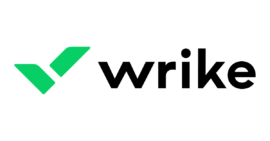
The newest subsidiary of Citrix, Wrike was already one of the biggest names in project management software even before its backing by the cloud computing giant. With the capacity to manage entire project portfolios, Wrike’s feature set includes custom request forms, risk predictions, invoicing software and enterprise-grade security. I found the platform incredibly powerful, with clear use cases for small businesses, enterprise organizations and various team functions.
Upon first glance, the user interface is busy, and Wrike’s learning curve is likely the steepest in the project management software space. That said, few vendors offer the same extent of enterprise capabilities.
Pricing
A free trial is available for each of the following plans:
- Free: $0 per user per month.
- Team: $9.80 per user per month.
- Business: $24.80 per user per month.
- Enterprise: Quotes are available upon request.
- Pinnacle: Quotes are available upon request.
Features
- Visualize project data through the table, list, board, Gantt, timelog and analytics views (Figure E).
- Add and edit task duration, approvals, time entries, subtasks, files and dependencies.
- Access project templates for Agile, creative, IT operations and project management office teams.
- Utilize customer-managed encryption keys and external encryption key storage via AWS.
- Access to over 400 app integrations and two-way sync with almost 30 other apps.
Figure E

Top integrations
- Power BI
- Salesforce
- Zoom
- Google Drive
Pros
- Plans for teams managing complex workloads, marketing and professional services.
- Extensive interoperability and workflow capabilities with business-critical applications.
- Enterprise-ready with premium security and data privacy controls.
Cons
- More expensive than most project management solutions.
- Steep learning curve for maximizing the extent of platform features.
- Several tools are only available as add-on features or for higher subscriptions.
Why we chose Wrike
Wrike is known for its ease of use and team collaboration, making it ideal for project managers who handle multiple projects. Another key reason why we chose Wrike was its scalability, making it a great choice for hyper-growth teams.
SEE: Find out more in our Wrike review, or see how Wrike compares to monday work management and Trello.
Asana: Best for extensibility
-
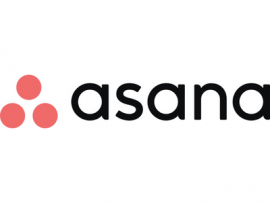
Image: Asana
One of the most popular project management software solutions, Asana is the work management platform started by former Facebook developers in 2008. The Silicon Valley-based company has grown dramatically in that time, and the platform’s extensibility affirms why so many businesses choose it. From viewing team member workloads to adding strategic goals and setting user security policies, I believe Asana has something for every team.
Though some actions were less intuitive, Asana made up for them with the documentation and resources to guide platform projects efficiently.
Pricing
A 30-day free trial is available for these Asana plans:
- Basic: $0 per user per month.
- Premium: $10.99 per user per month billed annually, or $13.49 per user per month billed monthly.
- Business: $24.99 per user per month billed annually, or $30.49 per user per month billed monthly.
Features
- Visualize project data through the list (Figure F), board, timeline, calendar and workload views.
- Manage and create project data with custom fields, rules and forms.
- Enable the built-in time tracking tool to visualize time spent on tasks.
- Import data from Airtable, Google Sheets, monday work management, Trello, Smartsheet and Wrike.
- Add integrations for communications, files, finance, IT, reporting, sales and security.
Figure F

Top integrations
- OneDrive
- Slack
- Jira
- Harvest
Pros
- Robust feature set competing with the best in project management software.
- Friendly user interface and flexible controls for different tools.
- Extensive import options, including multiple top project management platforms.
Cons
- At times, the interface is less intuitive than competing project management platforms.
- There is a steep learning curve for deploying some features and advanced tools.
- Occasional error messages and lag occur when moving between platform pages.
Why we chose Asana
Asana is an outstanding task management and team collaboration software. It’s flexible, fast and feature-rich and offers a generous free plan. The flexibility offered by Asana means it can be used by businesses of all sizes. In addition, you get several import options, making it easy for users to transition to Asana from other software or use the Asana with other applications.
SEE: Explore our Asana review, or see how Asana stacks up against Planner, Notion and Airtable.
Confluence: Best for project document management
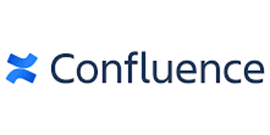
Confluence is a team collaboration and project management software with outstanding document management and knowledge-sharing features. It is suitable for any size or type of team. Users can also use Confluence to create and track tasks on one centralized platform.
Pricing
- Free: No cost for up to 10 users.
- Standard: $5.75 per user if billed monthly, or $580 per year for 1–10 users.
- Premium: $11 per user if billed monthly, or $1,100 per year for 1–10 users.
- Enterprise: Customized pricing.
Features
- Expensive template library. This includes customizable templates and blueprints for a variety of use cases.
- Version control and history feature to track changes to files over time.
- Atlassian Analytics tools (Figure G) to gain valuable insights for informed decision-making.
- Bulk archive feature to archive multiple outdated or obsolete pages in one go.
Figure G

Top integrations
- Jira
- Trello
- Salesforce
- Zendesk
Pros
- Strong in-app learning content.
- Outstanding document management tools.
- Centralized knowledge hub.
Cons
- Limited team collaboration tools.
- Performance issues with a large volume of data.
Why we chose Confluence
Confluence offers some advantages over other competitors, including a centralized knowledge repository, robust document search and discovery feature, and file sharing. Users already using Atlassian products will find Confluence a powerful addition to the ecosystem.
SEE: For more information, read our full Confluence review.
Zoho Projects: Best for multiple project visualizations
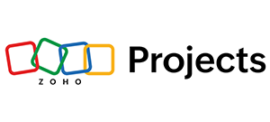
Under the Zoho portfolio of solutions, Zoho Projects offers teams a stack of features for tracking tasks, issues, time and resources to maximize collaboration and productivity. Users can visualize and adjust project data through views like a traditional spreadsheet, simple list, kanban board or Gantt chart in real time or automate mapped workflows with the Blueprints tool.
Zoho Projects offers a lot of functionality, considering it’s the most affordable project management software. However, it also lacks some of the configurability and advanced features included in the top tier of platforms.
Pricing
- Free: $0 for up to three users.
- Premium: $4 per user per month billed annually, or $5 per user per month billed monthly. A free trial is available.
- Enterprise: $9 per user per month billed annually, or $10 per user per month billed monthly. A free trial is available.
Features
- Visualize project data through the classic (spreadsheet), plain (list) and kanban views.
- Create project baselines to compare expected versus real progress on tasks.
- Track time for tasks to inform workload and resource management.
- Integrate with critical apps for Google, Microsoft, code repositories and more.
- Access Zoho Apps like Mail, Docs, CRM, Desk, Analytics and Forms.
Top integrations
- Zoho CRM
- Slack
- Google Suite
- Zapier
Pros
- Least expensive subscription plans among the top project management platforms.
- Robust feature set considering its affordability.
- Familiar interface and bundling value for existing Zoho customers.
Cons
- Lagging when moving between different platform pages.
- Limited options for viewing project data relative to competitors.
- Some platform actions, like creating multiple subtasks, aren’t intuitive.
Why we chose Zoho Projects
If you are looking for value for money, it doesn’t get any better than Zoho Project. This low-cost project management app offers outstanding value. You get multiple channels for team collaboration and communication and a quick and easy setup.
SEE: For more information, read our full Zoho Projects review.
Trello: Best for basic users
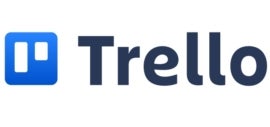
Trello is the ideal tool for users who want simplified project management. Its Kanban-based interface makes it easy to manage and track any type of project. While it might not be able to handle complex projects, Trello offers enough features to handle core project management tasks, including task automation, file sharing, and team collaboration.
Pricing
- Free: Up to 10 boards per workspace.
- Standard: $5 per user per month if billed annually, or $6 per user per month if billed monthly.
- Premium: $10 per user per month if billed annually, or $12.50 per user per month if billed monthly.
- Enterprise: $17.50 per user per month when billed annually.
Features
- Project checklists to help break big projects into more manageable tasks.
- File attachment feature with drag-and-drop functionality.
- Automate workflows through Trello’s built-in automation builder (Figure H).
- Extensive library of pre-built templates.
Figure H

Top integrations
- Dropbox
- GitHub
- Jira
- Slack
Pros
- Generous free plan.
- Highly visual interface.
- Variety of add-ons.
- Powerful automation tools.
Cons
- Heavily reliant on the kanban view.
- Not designed to handle complex projects.
Why we chose Trello
Trello earns a spot on our list of best project management software with its feature-rich free plan, collaboration tools and outstanding ease of use. The Kanban-style interface is visually appealing and feels intuitive. In addition, the efficiency offered by Trello helps simplify project management.
SEE: For more information, read our full Trello review.
Jira: Best for development teams
-
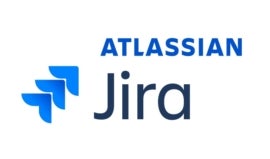
Image: Jira
Atlassian’s portfolio of collaboration, code management and security solutions is led by its flagship project tracking software, Jira. In response to a growing number of general-use project management solutions, Jira Software offers a mix of project data views, reporting and configuration capabilities with the Work Management platform included in its suite of products.
Jira is ideal for organizations already using Jira products or teams relying on integrations like private repository host BitBucket. Otherwise, its general project management functionality is below par relative to the broader project management marketplace.
Pricing
- Free: $0 for up to 10 users.
- Standard: $7.75 per user per month billed monthly and $790 annually for 1–10 users.
- Premium: $15.25 per user per month billed monthly and $1,525 annually for 1–10 users.
- Enterprise: Available for teams with more than 800 users and only billed annually. Contact Jira sales for pricing information.
Features
- Visualize project data through the list, board, timeline (Figure I) and calendar views.
- Import existing work to create project issues and collect data through forms.
- Access a Summary page embedded with key performance indicators for progress, priorities and workloads.
- Integrate with Jira Software and other Atlassian tools.
- Start from 20 prebuilt templates for finance, marketing, human resources and legal teams.
Figure I

Top integrations
- Github
- Lucidchart
- Confluence
- Microsoft Teams
Pros
- More than 500 integrations and 3,000 extensions for workflow apps.
- Bundle with Atlassian’s portfolio of tools like BitBucket, Crucible and Trello.
- Built-in time tracking tools for tracking effort against tasks.
Cons
- Higher learning curve for non-software development teams.
- Not as intuitive as other top project management tools.
- Still a developing application relative to Jira Software’s accolades.
Why we chose Jira
Jira is one the best project management software for its Agile support, bug tracking and issue management capabilities. While these features are most suitable for software development, they can be used for a variety of other applications.
SEE: For more information, read our Jira review, or see how Jira compares to Asana and Trello.
What are key features of project management software?
The key features of project management software vary depending on the specific tool, but generally, these are some of the most important features to look for when evaluating a solution.
Task management
Effective task management capabilities enable users to create, assign, track and update tasks, providing a clear overview of individual responsibilities and overall project progress. This feature is essential for keeping teams organized and ensuring that everyone understands their roles and deadlines, contributing to the successful completion of projects.
Customizable workflows
Customizable workflows allow teams to create and modify workflows according to their unique processes and preferences, ensuring the software is adaptable to their specific needs and requirements. This flexibility enables teams to tailor their project management system to suit their project types, methodologies and industry best practices, ultimately improving efficiency and effectiveness.
Collaboration and communication
Project management software should foster seamless collaboration and communication among team members through features like real-time chat, file sharing, commenting and notifications. These tools help keep everyone on the same page and streamline decision-making, making it easier to coordinate work, resolve issues and ensure that projects stay on track.
Multiple views
Providing various views such as Gantt charts, kanban boards, list views and calendar views allows users to visualize project data in different ways, catering to individual preferences and enhancing overall project comprehension. This feature helps teams monitor progress, identify potential bottlenecks and plan work more effectively.
Native time tracking
Time-tracking capabilities help teams monitor the time spent on tasks and projects, facilitating better resource allocation and promoting efficient time management. This feature enables organizations to optimize productivity, manage budgets and accurately bill clients for work completed.
Custom fields
Custom fields enable teams to add personalized data points to tasks and projects, making it easier to track, filter and report on the unique information relevant to their organization. This feature provides additional flexibility and customization, ensuring teams can capture and manage the data that matters most to them.
Document and file management
Integrated document and file management features allow users to store, share and collaborate on project-related files, ensuring easy access and organization. This functionality helps keep essential documents and resources centralized, streamlining communication and reducing the risk of misplacing or duplicating files.
Reporting and analytics
Comprehensive reporting and analytics tools help users gain insights into project performance, identify bottlenecks and make informed decisions based on real-time data. These features enable teams to continuously improve their processes, allocate resources more effectively and optimize overall project success.
Resource management
Effective resource management capabilities enable teams to allocate resources such as personnel, equipment and budgets optimally, ensuring projects are completed efficiently and cost-effectively. This feature helps organizations balance workloads, avoid overloading team members and prevent resource conflicts.
Third-party integrations
Integration with other tools and software, such as customer relationship management systems, accounting tools and productivity suites, can enhance the project management software’s functionality and streamline workflows. This feature enables teams to connect their project management system to other essential tools, reducing manual data entry and facilitating a more seamless working experience.
What are the benefits of project management software?
Project management software offers a multitude of benefits that can significantly enhance team productivity and efficiency. Let’s delve into some of the most compelling advantages that these tools can provide.
Improved organization and prioritization
Project management software offers a comprehensive and structured approach to organizing tasks and projects, making it easier for teams to stay focused and prioritize work. It enables users to break projects down into smaller, manageable tasks and assign deadlines, ensuring that teams can effectively allocate resources and time to critical activities. By categorizing and prioritizing tasks, team members can better understand their responsibilities and overall project progression, reducing confusion and miscommunication.
SEE: Improve your project organization with these top project portfolio management software.
Enhanced collaboration and communication
A key benefit of project management software is the facilitation of team collaboration and communication. By providing a centralized platform, team members can easily share information, documents and updates on their progress. This visibility allows for more effective communication, faster decision-making and better issue resolution. Additionally, such tools often have integrated communication features, like chat or comment sections, which can help streamline communication and ensure everyone is on the same page.
Time and resource management
Project management software helps teams efficiently manage their time and resources, ultimately leading to increased productivity. These tools often include features like time tracking, workload balancing and resource allocation, which allow teams to make informed decisions about how to best utilize their time and resources. By monitoring progress and identifying bottlenecks, managers can make adjustments and reallocate resources as needed to keep projects on track.
Accurate budget tracking and financial control
Managing budgets is a critical aspect of any project and project management software can help ensure financial control. With features like cost estimation, expense tracking and financial reporting, teams can monitor budgets and make informed decisions to avoid overspending. This level of financial control and visibility not only helps projects stay within budget but also supports better forecasting for future projects.
Increased accountability and transparency
Project management software increases accountability and transparency by providing a clear overview of tasks, responsibilities and deadlines. This visibility helps ensure team members understand their roles and take ownership of their work. Moreover, the software allows for real-time progress tracking, making it easier to hold individuals accountable for meeting deadlines and completing tasks. This improved accountability fosters a sense of ownership and responsibility within the team, leading to better overall project outcomes.
Streamlined reporting and decision-making
Finally, project management software simplifies reporting and decision-making by consolidating data from various sources into customizable dashboards and reports. This enables stakeholders to access relevant information quickly and make data-driven decisions. By providing insights into project performance, teams can identify areas for improvement and implement changes, ensuring projects stay on track and meet objectives.
Considerations for project management tools
Use cases and audience
Most project management software solutions speak to a broad audience of potential use cases. Across industries and departments, the use cases mentioned most for project management tools include:
- Agile, scrum and other software development methodologies.
- Campaign and client management.
- Content creation and digital asset management.
- Event planning and management.
- Issue, request, ticket and bug tracking.
- Lead tracking and sales pipeline.
- Onboarding and offboarding personnel.
- Product management and features backlog.
- Resource, time and workload allocation.
Integrations
As with the two software development project management picks, the range of integrations offered by top project management platforms is a crucial differentiating factor. Teams across the globe increasingly rely on a stack of applications to conduct everyday work. Considering project management software is meant to enable productivity in teams existing workflows, the lack of a critical integration is a dealbreaker.
Customer support and service
Finally, teams relying on project management software for critical business operations also need to ensure the level of technical support meets expectations. Teams are bound to encounter unexpected outages, roadblocks and platform issues, making regular availability by phone or web chat essential to business continuity.
How do I choose the best project management software for my business?
The best project management software should offer a combination of user-friendliness, customization and scalability to meet the needs of your team and organization. It should be intuitive and easy to navigate, allowing users to perform tasks with minimal training. The software should also be adaptable, providing the ability to tailor features and workflows to suit the organization’s specific requirements. Scalability is another essential aspect, ensuring that the software can accommodate growth in team size, project complexity and workload.
SEE: Working on a smaller team? Explore top project management software for small businesses.
Effective communication, time and resource management and comprehensive reporting are vital features of a top project management tool. Collaboration and communication features should streamline information sharing and decision-making, while time and resource management capabilities help optimize productivity. Robust reporting and analytics functionalities are crucial for informed decision-making and continuous improvement. Integration with other tools, such as CRM systems or productivity suites, can further enhance efficiency.
Lastly, consider the security, reliability and cost-effectiveness of the software. Robust security measures, such as encryption and access controls, are necessary to protect sensitive project data. Reliability in terms of uptime and responsive customer support ensures a seamless experience. The best project management software should offer value for money, balancing features and functionality with cost. Evaluating customer reviews, case studies and testimonials can provide valuable insights into the tool’s suitability for your organization’s specific needs.
Methodology
To compile this list of the best project management software, we did a deep dive into several parameters and features of the software. This complete analysis includes an assessment of the usability of the software, standout features, and security tools.
For the assessment of the user interface, we looked at the ease of navigation and visual appeal of each software. An intuitive user interface plays a key role in the overall user experience. We also analyzed the functionality and features of each software, including core and advanced tools. In addition, the performance and stability of each software were assessed to check the responsiveness and efficiency of the software.
For a more thorough understanding of ease of use, we looked at several other aspects of the software, including ease of setup, scalability and user support. Lastly, we did an analysis of the compatibility and integration of each software to check how it would fit into different technology ecosystems.


